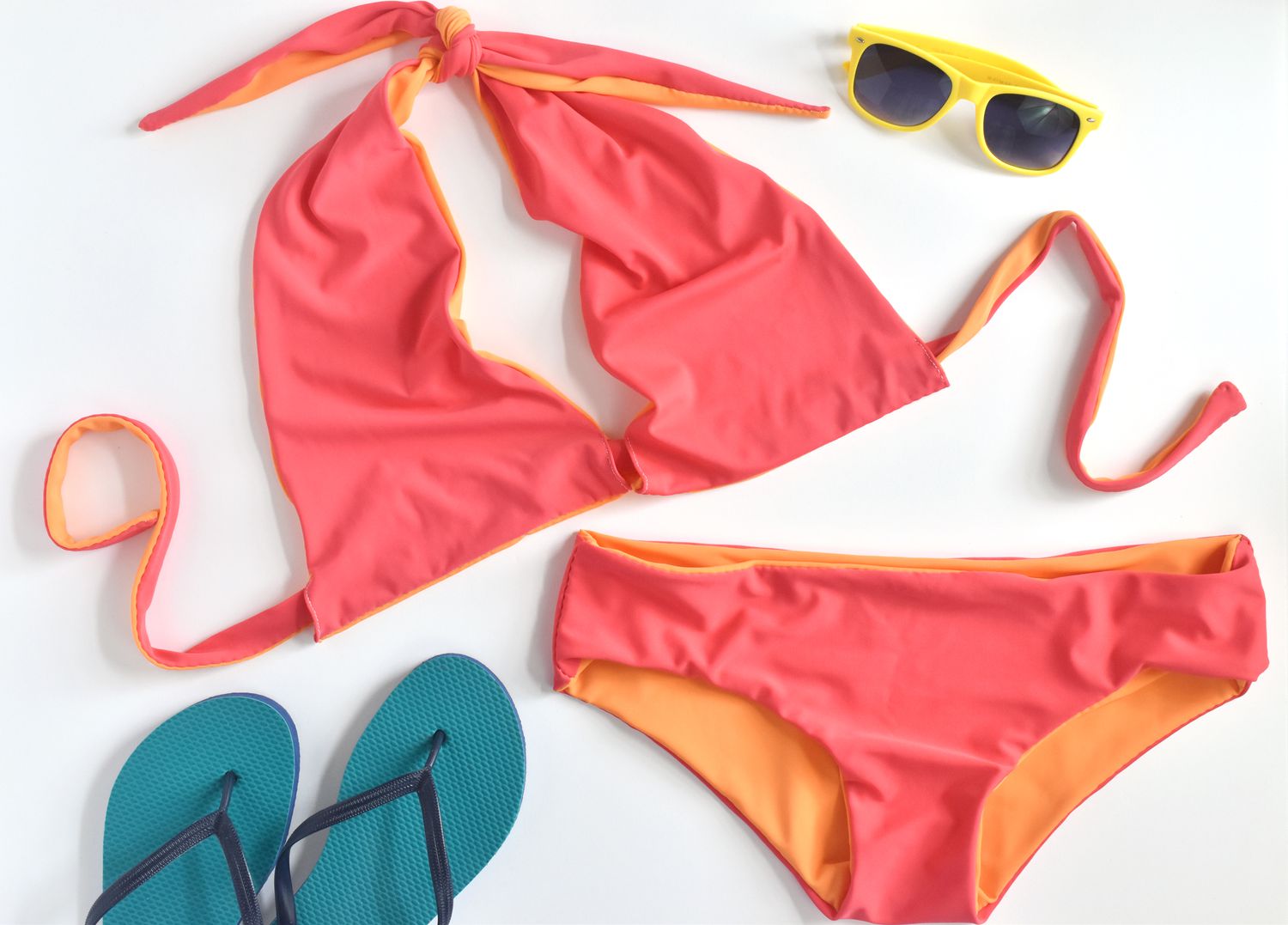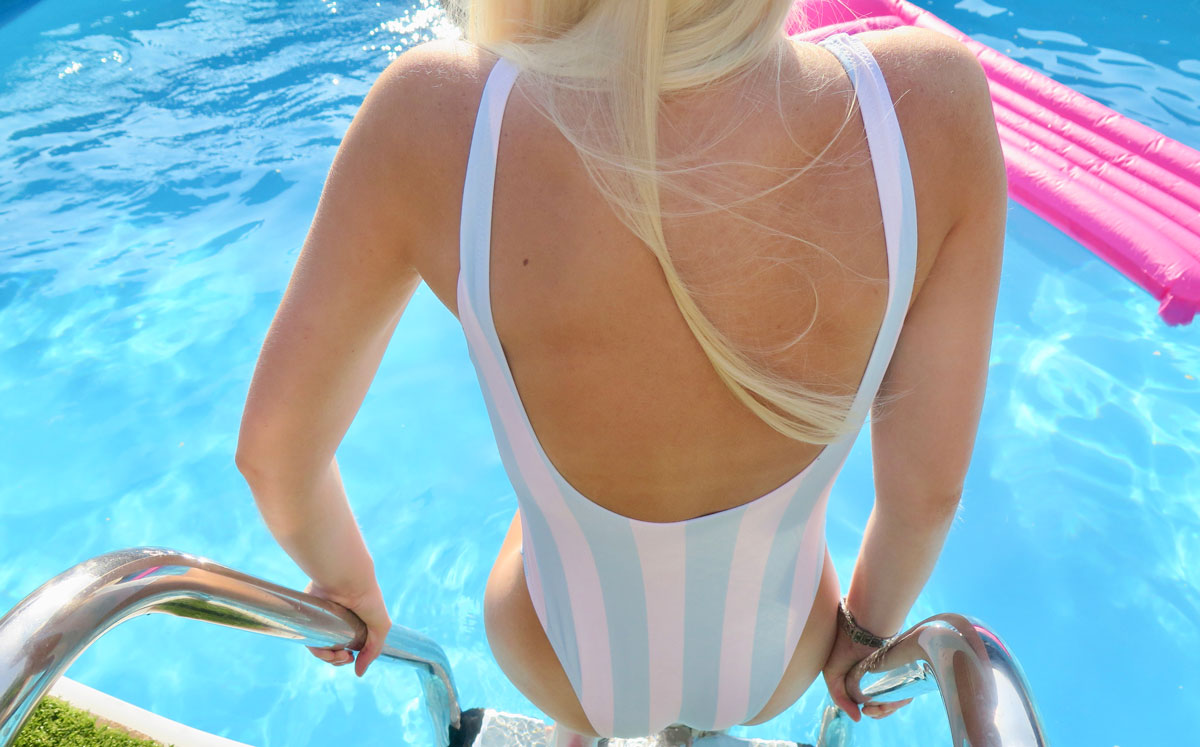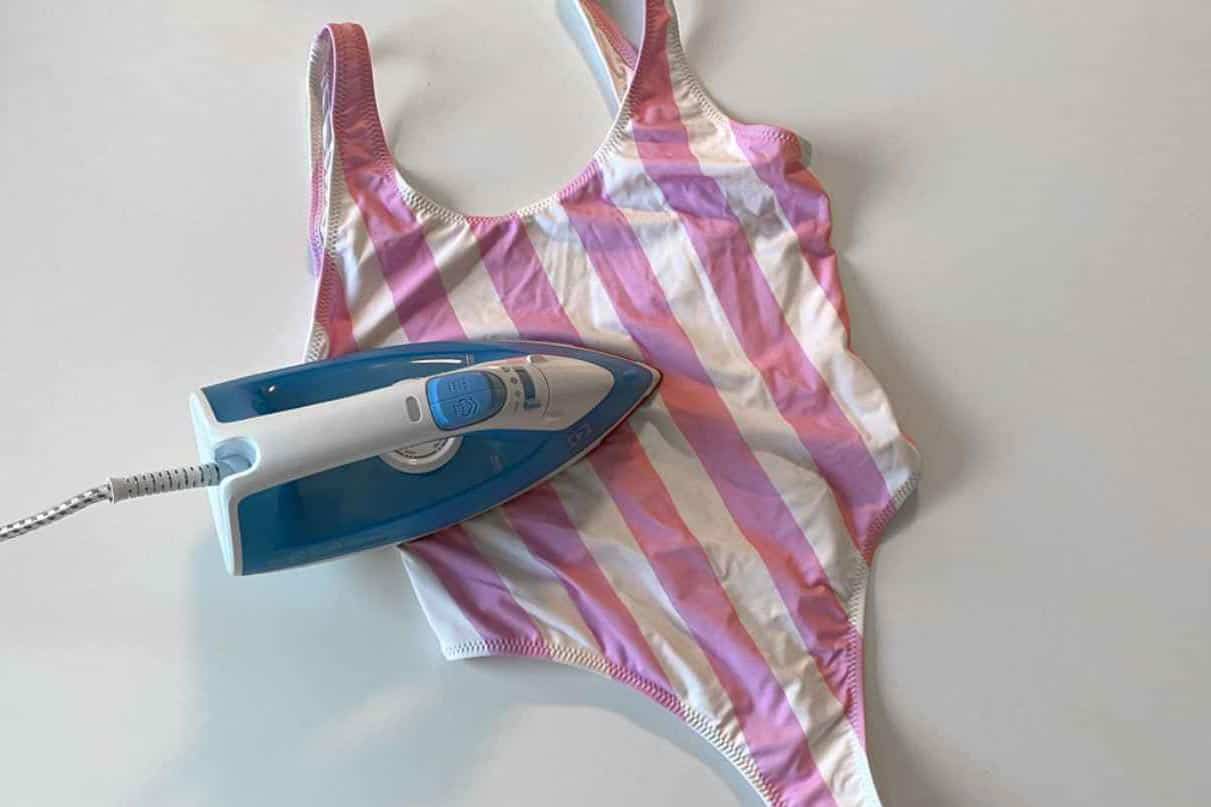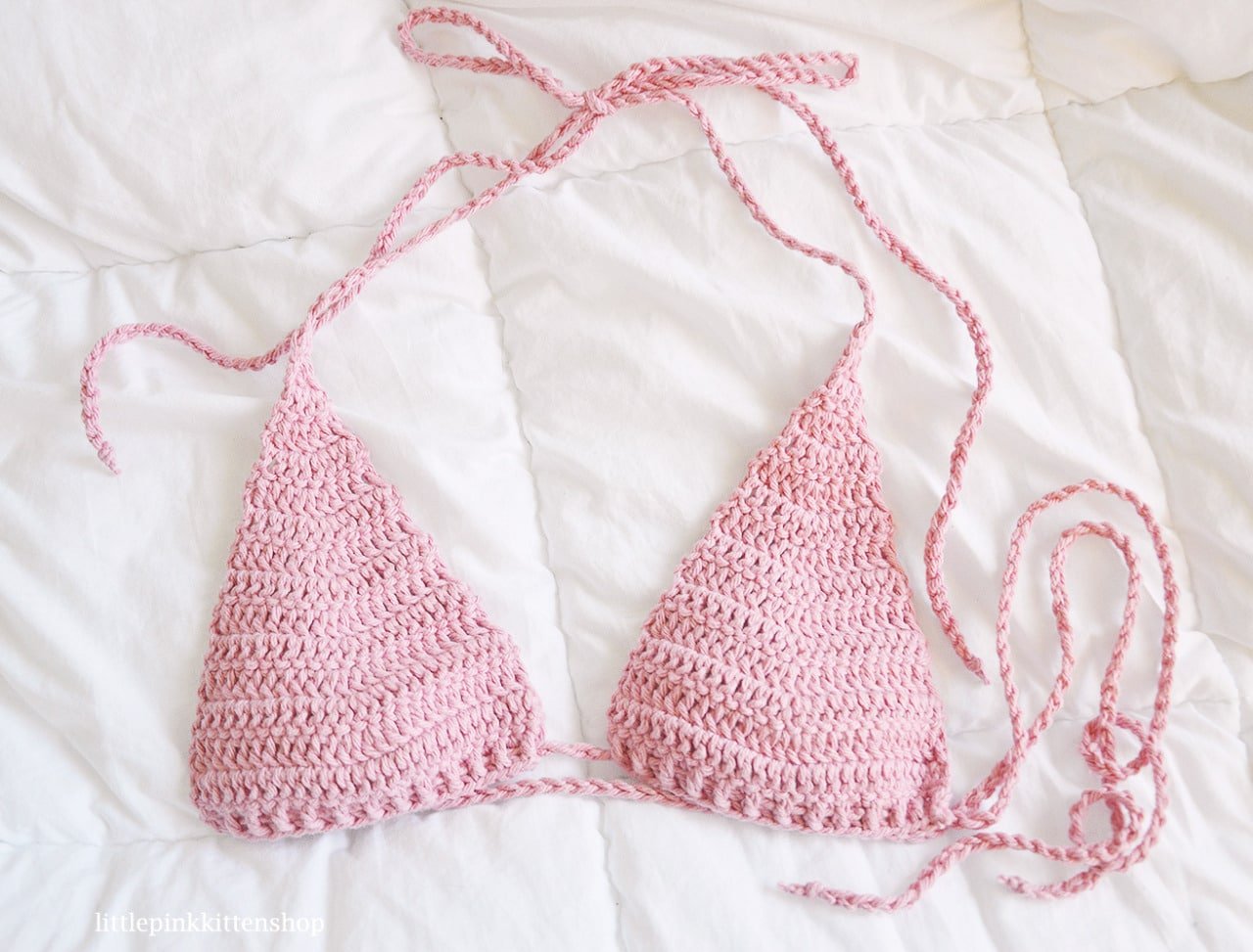Home>How-to Guides>For Women>How To Prevent Swimsuit Chafing


For Women
How To Prevent Swimsuit Chafing
Published: July 31, 2023
Learn how to prevent swimsuit chafing for women. Effective tips and tricks to avoid discomfort while enjoying your time at the pool or beach.
(Many of the links in this article redirect to a specific reviewed product. Your purchase of these products through affiliate links helps to generate commission for Under-tec.com, at no extra cost. Learn more)
Table of Contents
- How to Prevent Swimsuit Chafing
- Introduction
- Understanding the Causes of Swimsuit Chafing
- Choosing the Right Swimsuit Fabric
- Ensuring Proper Swimsuit Fit
- Applying Lubrication to Sensitive Areas
- Taking Regular Breaks and Rinsing Off
- Drying Off Thoroughly After Swimming
- Avoiding Rubbing or Scratching
- Treating Swimsuit Chafing
- Conclusion
How to Prevent Swimsuit Chafing
Swimsuit chafing can be a frustrating and uncomfortable experience, but there are steps you can take to prevent it. By understanding the causes of swimsuit chafing, choosing the right swimsuit fabric, ensuring proper swimsuit fit, applying lubrication to sensitive areas, taking regular breaks and rinsing off, drying off thoroughly after swimming, and avoiding rubbing or scratching, you can enjoy your time in the water without the annoyance of chafed skin.
Swimsuit chafing occurs when the constant rubbing of your swimsuit against your skin causes irritation. The friction can be intensified by factors such as rough or abrasive swimsuit fabrics, ill-fitting swimsuits, or prolonged exposure to water. To prevent swimsuit chafing, start by choosing a swimsuit made from a soft and smooth fabric. Look for materials like spandex or nylon blends that offer a comfortable and friction-free fit.
In addition to selecting the right fabric, ensuring proper swimsuit fit is crucial. A swimsuit that is too tight or too loose can increase friction and irritation. Take the time to try on different sizes and styles to find the one that provides a snug yet comfortable fit. Pay attention to areas prone to chafing, such as the underarms, neckline, and bikini line, and make sure the swimsuit sits properly without digging into your skin.
To further reduce friction, apply a lubricant to sensitive areas before putting on your swimsuit. Petroleum jelly or specialized anti-chafing balms can create a protective barrier between your skin and the fabric, minimizing the likelihood of chafing. Reapply the lubricant as needed, especially after spending time in the water.
While swimming, it’s important to take regular breaks and rinse off your swimsuit. Chlorine, saltwater, and sweat can all contribute to chafing. By taking short breaks from the water and rinsing off with freshwater, you can wash away any irritants that may cause discomfort. After rinsing, make sure to dry off thoroughly before putting your swimsuit back on. Excess moisture can exacerbate chafing, so use a towel to pat yourself dry.
Avoid rubbing or scratching any areas that feel irritated or chafed. While it may provide temporary relief, it can actually worsen the condition and lead to further irritation. Instead, opt for gentle patting or apply a soothing lotion or cream to calm the skin. If the chafing persists or becomes severe, it’s advisable to seek medical attention.
By following these preventative measures, you can enjoy your time in the water without the discomfort of swimsuit chafing. Remember to choose the right swimsuit fabric, ensure proper fit, apply lubrication, take breaks, rinse off, dry thoroughly, and avoid rubbing or scratching. Taking care of your skin will help you fully enjoy your swimsuit season without any unwanted chafing.
Introduction
Hello there, beach babes and water enthusiasts! As summer approaches, many of us are excited to don our favorite swimsuits and plunge into the refreshing waters. However, the joy of swimming can be dampened by the unpleasant experience of swimsuit chafing. Whether you’re lounging by the pool or riding the waves at the beach, chafed skin can quickly become a nuisance.
Swimsuit chafing occurs when the friction between your swimsuit and skin leads to irritation and discomfort. The constant rubbing can cause redness, soreness, and even painful rashes. It’s a common problem faced by both women and men, but fortunately, there are effective ways to prevent it.
In this article, we will explore various strategies to help you prevent swimsuit chafing and enjoy your water activities to the fullest. From choosing the right swimsuit fabric to ensuring the perfect fit, applying lubrication to sensitive areas, and taking regular breaks, we’ll cover all the tips and tricks you need to know to keep chafing at bay.
Swimsuit chafing can occur due to a variety of factors. Rough or abrasive swimsuit fabrics, ill-fitting swimsuits, extended exposure to water, and even the combination of sweat and chlorine or saltwater can all contribute to the problem. Consequently, it’s essential to proactively address these factors to prevent chafing from ruining your beach day.
By taking the necessary precautions and implementing the preventive measures we will discuss, you can confidently dive into the water knowing you’ve done everything possible to avoid swimsuit chafing. So, let’s get started on this journey toward a chafe-free and enjoyable swimming experience!
Understanding the Causes of Swimsuit Chafing
Before we delve into the preventive measures, it’s essential to understand the underlying causes of swimsuit chafing. This knowledge will help us address the issue at its root, allowing for more effective prevention.
Swimsuit chafing occurs when there is constant rubbing and friction between your swimsuit and your skin. The friction can be exacerbated by a few key factors.
Firstly, the choice of swimsuit fabric plays a significant role in determining the likelihood of chafing. Rough or abrasive materials can cause more friction, increasing the chances of irritation. Additionally, certain fabrics may not wick away moisture effectively, leading to prolonged dampness that can worsen chafed skin.
Ill-fitting swimsuits can also contribute to chafing. A swimsuit that is too tight can create excessive pressure and friction on the skin, while a swimsuit that is too loose may cause constant movement and rubbing. Both scenarios can result in chafing and discomfort.
Extended exposure to water, especially saltwater or chlorinated pools, can further aggravate swimsuit chafing. Salt and chemicals in the water can dry out the skin, making it more susceptible to irritation. Additionally, the combination of sweat and water can create a sticky environment that exacerbates friction and chafing.
It’s important to note that certain areas of the body are more prone to chafing than others. Underarm areas, bikini lines, and the neckline are common trouble spots. These areas often experience more friction due to movement and contact with the swimsuit fabric.
By understanding these underlying causes, we can take proactive steps to prevent swimsuit chafing. By choosing the right swimsuit fabric, ensuring a proper fit, and addressing prolonged exposure to water, we can effectively minimize the risk of chafing and enjoy a more comfortable and carefree swim.
Choosing the Right Swimsuit Fabric
When it comes to preventing swimsuit chafing, one of the key factors to consider is the fabric of your swimsuit. The choice of fabric can greatly impact the level of comfort and friction you experience while wearing it.
Opt for swimsuits made from soft and smooth fabrics that glide effortlessly against the skin. Fabrics like spandex or nylon blends are excellent options as they offer a comfortable and friction-free fit. These materials have a good stretch and recovery, allowing them to conform to your body without causing excess pressure or rubbing.
Avoid swimsuits made from rough or abrasive fabrics like rough-textured cotton or those with high amounts of polyester. These materials can create more friction against your skin, increasing the likelihood of chafing. Additionally, they may not wick away moisture effectively, leading to prolonged dampness that can worsen chafed skin.
If you have sensitive skin or are prone to chafing, consider looking for swimsuits with a lining. The lining provides an extra layer of protection between your skin and the outer fabric, reducing friction and irritation.
It’s also worth noting that swimsuit fabrics with a UPF (Ultraviolet Protection Factor) rating can offer added sun protection while swimming. This is especially important if you plan on spending long periods in the sun. Look for swimsuits labeled with a high UPF rating to shield your skin from harmful UV rays.
When shopping for a swimsuit, take the time to feel the fabric and gauge its texture. Run your hands along the material to check for any roughness or potential irritation. You want a fabric that feels soft, smooth, and comfortable against your skin.
Remember, prevention is key when it comes to swimsuit chafing. By selecting the right fabric for your swimsuit, you can significantly reduce the risk of friction and irritation, allowing you to fully enjoy your time in the water without the discomfort of chafed skin.
Ensuring Proper Swimsuit Fit
A well-fitting swimsuit is essential for preventing chafing and ensuring a comfortable swimming experience. The right fit will minimize friction and rubbing, reducing the risk of irritation and discomfort. Here are some key tips to ensure that your swimsuit fits properly:
1. Choose the right size: Don’t underestimate the importance of selecting the correct size. Avoid swimsuits that are too tight or too loose. A swimsuit that is too tight can dig into your skin and cause unnecessary pressure, leading to chafing. On the other hand, a swimsuit that is too loose can create excess movement and rubbing, also contributing to chafing. Take the time to try on different sizes and styles to find the one that offers a snug yet comfortable fit.
2. Pay attention to the straps: Make sure that the straps of your swimsuit are neither too tight nor too loose. Tight straps can dig into your shoulders, causing discomfort and potential chafing. Loose straps can slip off or move around, leading to additional friction. Adjust the straps to ensure a secure and comfortable fit without causing undue pressure.
3. The importance of the leg openings: Pay attention to the leg openings of your swim bottoms. They should fit snugly around your hips and thighs without digging in or causing any discomfort. The leg openings should stay in place without riding up or shifting, as this can create friction and chafing.
4. Check the elastic bands: Ensure that any elastic bands in your swimsuit are firm but not overly tight. They should provide a secure fit without cutting into your skin. Elastic bands that are too tight can restrict movement and contribute to chafing, especially in areas such as the waist or underarms. Be mindful of any areas where the swimsuit can potentially create excess pressure or rubbing.
5. Consider customizable options: Some swimsuit styles offer options for customization, such as adjustable ties or removable padding. These customizable features allow you to create a more personalized and comfortable fit. Adjusting the ties or removing padding can help alleviate any pressure or discomfort caused by the swimsuit.
Remember to try on your swimsuit and move around in it before making a purchase. Perform a few simple movements such as stretching, bending, and lifting your arms to ensure that the swimsuit stays in place and feels comfortable. If you’re purchasing online, refer to the size chart provided by the brand and read customer reviews for additional insights into the fit.
By prioritizing proper swimsuit fit, you can significantly reduce the risk of chafing and ensure a more enjoyable swimming experience. Take the time to find a swimsuit that fits you well, paying attention to size, straps, leg openings, elastic bands, and any customizable features. A well-fitting swimsuit will keep you comfortable and free from chafed skin while you make a splash in the water.
Applying Lubrication to Sensitive Areas
Applying lubrication to sensitive areas is a simple and effective way to prevent swimsuit chafing. By creating a barrier between your skin and the fabric, lubrication reduces friction and minimizes the risk of irritation and discomfort. Here’s how to properly apply lubrication:
1. Choose the right lubricant: Look for a lubricant that is suitable for use on the skin and safe for sensitive areas. Petroleum jelly is a popular and affordable option that creates a protective barrier and helps reduce friction. There are also specialized anti-chafing balms available on the market that are specifically designed for preventing chafing during physical activities, including swimming.
2. Apply before putting on your swimsuit: Before wearing your swimsuit, apply a small amount of lubrication to areas that are prone to chafing. Common trouble spots include the underarms, neckline, and bikini line. Gently massage the lubricant into your skin until it is evenly spread. Be sure to cover the entire area that may come into contact with the swimsuit fabric.
3. Reapply as needed: Depending on the duration of your water activities, you may need to reapply the lubricant. Water, sweat, and movement can cause the lubrication to wear off. It’s a good idea to carry a small amount of lubricant with you and reapply it if you start to feel any discomfort or notice increased friction.
4. Consider silicone-based lubricants: Silicone-based lubricants are known to have longer-lasting effects and can provide better water resistance compared to petroleum jelly or water-based options. If you’re going to be spending an extended period in the water or participating in water sports, a silicone-based lubricant may be a more suitable choice.
Remember, a little goes a long way when it comes to lubrication. It’s important not to apply an excessive amount, as it may feel greasy or increase the likelihood of the swimsuit slipping or sliding. Start with a small amount and gradually increase if necessary.
Applying lubrication to sensitive areas before putting on your swimsuit can significantly reduce the friction and rubbing that can lead to chafed skin. It’s a simple yet effective preventive measure that can make a remarkable difference in your swimming experience. So, grab your preferred lubricant and keep those sensitive areas protected and comfortable while you dive into the water.
Taking Regular Breaks and Rinsing Off
When it comes to preventing swimsuit chafing, taking regular breaks and rinsing off can make a significant difference. These practices help to minimize the factors that contribute to chafing, such as saltwater, chlorine, and sweat, allowing your skin to stay fresh and comfortable. Here’s what you need to know:
1. Take short breaks from the water: Prolonged exposure to water can make your skin more vulnerable to chafing. To prevent this, make it a habit to take short breaks from swimming. Get out of the water, rest, and allow your skin to dry off naturally. Not only does this give your skin a break from the potential friction of the swimsuit, but it also allows any accumulated moisture to evaporate.
2. Rinse off with freshwater: After taking a break, rinse off your body and swimsuit with freshwater. This helps to remove residues of saltwater or chlorine, which can dry out your skin and contribute to irritation. Use a shower or a hose if available, making sure to pay attention to the areas that are prone to chafing, such as the underarms, neckline, and bikini line.
3. Dry off thoroughly: Once you’ve rinsed off, it’s crucial to dry off your body and swimsuit thoroughly. Excess moisture can exacerbate chafing and increase the risk of irritation. Use a clean towel to pat yourself dry, paying extra attention to areas where the swimsuit is in contact with your skin. This will help to remove any remaining water and ensure that your skin and swimsuit are dry before putting the swimsuit back on.
4. Consider changing into a dry swimsuit: If you plan on swimming for an extended period or notice any signs of chafing, consider changing into a dry swimsuit. This allows your skin to rest and prevents continued rubbing against damp fabric. Plus, a fresh swimsuit may have a smoother texture and reduce the chances of chafing.
By incorporating regular breaks and rinsing off into your swimming routine, you can reduce the risk of chafing and maintain the comfort of your skin. Breaking up your swim sessions, rinsing away irritants, and ensuring thorough drying all contribute to a more enjoyable and chafe-free experience. So, remember to give yourself and your skin the necessary rest and care while enjoying your time in the water.
Drying Off Thoroughly After Swimming
After a refreshing swim, it’s important to take the time to dry off thoroughly. Proper drying not only helps you feel comfortable but also plays a crucial role in preventing swimsuit chafing. Here are some key steps to ensure that you dry off effectively:
1. Use a clean towel: Start by using a clean, dry towel to pat yourself down. Avoid rubbing or harshly drying your skin, as this can cause friction and irritation. Instead, gently pat your skin to remove excess moisture. Pay special attention to areas where the swimsuit was in contact with your skin, such as the underarms, neckline, and bikini line. Make sure to dry off in between any folds or creases to prevent moisture buildup that can contribute to chafing.
2. Change out of your swimsuit: After drying off, consider changing out of your swimsuit and into dry clothing. Continued wear of a damp swimsuit can prolong moisture exposure, making your skin more susceptible to chafing. If changing is not possible, at least remove the wet swimsuit temporarily to allow your skin to air dry before putting it back on.
3. Patience is key: Take the time to thoroughly dry both your body and swimsuit. Even if you feel mostly dry, there might be hidden spots that are still damp. Leaving even a small amount of moisture can contribute to chafing, especially when your swimsuit rubs against your skin. Investing a little extra time in drying off can go a long way in preventing discomfort and irritation.
4. Consider a hairdryer for your swimsuit: If you want to ensure that your swimsuit is completely dry before wearing it again, consider using a hairdryer on a low, cool setting. This gentle airflow can help to remove any residual moisture from the fabric. Hold the hairdryer at a reasonable distance to avoid applying too much heat, which can potentially damage the swimsuit material.
Remember, drying off thoroughly is an essential step in preventing swimsuit chafing. By using a clean towel, focusing on areas prone to chafing, changing out of damp swimsuits, and being patient with the drying process, you can minimize the risk of skin irritation and discomfort. So, make drying off a habit after every swim to keep your skin happy and chafe-free.
Avoiding Rubbing or Scratching
When you experience swimsuit chafing, it can be tempting to alleviate the discomfort by rubbing or scratching the affected areas. However, doing so can actually worsen the condition and lead to further irritation. Here are some important points to keep in mind when it comes to avoiding rubbing or scratching:
1. Resist the urge to scratch: While scratching may provide temporary relief, it can cause more harm than good. Scratching can break the skin, making it more susceptible to infection and prolonging the healing process. It can also exacerbate the irritation and potentially lead to more severe chafing. Instead of scratching, try alternative methods to soothe the affected area, such as applying a soothing lotion or cream.
2. Gently pat or calm the skin: Instead of rubbing, opt for gentle patting or calming the skin. If the chafed area feels irritated, gently pat it with a soft towel or cloth to alleviate discomfort. You can also use your hand to apply gentle pressure to soothe the skin. This helps to relieve the discomfort without causing additional friction or damage to the skin.
3. Apply a soothing lotion or cream: To further soothe the chafed skin, consider applying a gentle and moisturizing lotion or cream. Look for products designed specifically for sensitive or irritated skin. These products can help to hydrate and calm the skin, reducing redness and inflammation. Be sure to follow the product’s instructions for application and reapplication throughout the day as needed.
4. Seek medical attention if needed: If the chafing persists or becomes severe and shows signs of infection, it’s important to seek medical attention. A healthcare professional can provide further guidance and recommend appropriate treatments to help heal the skin. They may prescribe medicated creams or ointments to address any underlying issues and prevent infection.
Remember, avoiding rubbing or scratching is crucial for allowing the skin to heal properly. By resisting the temptation to scratch, gently patting or calming the skin, applying soothing lotions or creams, and seeking medical attention if necessary, you can promote the healing process and prevent further irritation. Take care of your skin and prioritize its well-being to ensure a comfortable and enjoyable swimming experience.
Treating Swimsuit Chafing
If you find yourself dealing with swimsuit chafing despite your best preventive efforts, there are several steps you can take to treat the condition and promote healing. Here’s how to effectively address swimsuit chafing:
1. Cleanse the affected area: Start by gently cleansing the chafed area with mild soap and lukewarm water. This helps to remove any dirt, sweat, or irritants that might be present. Avoid using harsh soaps or scrubbing vigorously, as this can further irritate the skin.
2. Keep the area dry: After cleansing, make sure to thoroughly dry the chafed skin. Use a soft towel to gently pat the area until it is completely dry. Moisture can exacerbate chafing and delay the healing process, so it’s crucial to keep the affected area as dry as possible.
3. Apply a soothing ointment or cream: To help soothe the chafed skin and promote healing, apply a petroleum jelly-based ointment or a specialized anti-chafing cream. These products provide a protective barrier and help to moisturize the skin. Be sure to follow the product’s instructions for application and reapplication as needed throughout the day.
4. Wear loose-fitting clothing: Opt for loose-fitting clothing that won’t rub against the chafed area. Tight or restrictive clothing can further irritate the skin and impede the healing process. Choose soft, breathable fabrics that allow for airflow and minimize friction on the affected area.
5. Take a break from swimming: If possible, take a break from swimming until the chafed skin has had a chance to heal. Continuing to expose the irritated area to water and friction can prolong the healing process and exacerbate the discomfort. Give your skin some time to recover before diving back into the water.
6. Monitor for signs of infection: Keep an eye out for any signs of infection, such as increased redness, swelling, pus, or a fever. If you notice any of these symptoms, seek medical attention promptly, as you may need antibiotics or further treatment to address the infection.
Remember, treating swimsuit chafing is essential for promoting healing and preventing further discomfort. By cleansing the area, keeping it dry, applying soothing ointments or creams, wearing loose-fitting clothing, and monitoring for signs of infection, you can effectively address chafed skin and help it recover more quickly. Prioritize your skin’s well-being and take the necessary steps to restore its health.
Conclusion
Swimsuit chafing can put a damper on your swimming experience, but by following these preventive measures, you can greatly reduce the risk and enjoy a comfortable time in the water. Start by choosing a swimsuit made from soft and smooth fabric, ensuring a proper fit, and applying lubrication to sensitive areas. Taking regular breaks, rinsing off, and drying off thoroughly are also important practices to minimize chafing.
If you do experience swimsuit chafing, it’s vital to treat it promptly and with care. Cleanse the affected area, keep it dry, and apply soothing ointments or creams to promote healing. Additionally, wearing loose-fitting clothing and monitoring for signs of infection are important steps in the treatment process.
Remember to listen to your body and prioritize its well-being. Each person’s experience with swimsuit chafing may vary, so it’s important to find what works best for you. Experiment with different preventive measures and treatment methods to find the ones that are most effective in preventing and alleviating chafing.
With the right precautions and attention to detail, you can enjoy your time in the water without dealing with the discomfort of swimsuit chafing. So, gear up in your favorite swimsuit, apply the knowledge you’ve gained, and dive into a chafe-free swimming experience!










